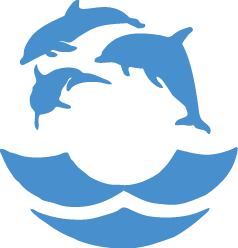Glossary of Wildlife & Geography
- Admiralty Island - The largest island in southeast Alaska and home to more grizzly bears than people—approximately one per square mile. More than 90% of the island is a designated Federal Wilderness, and the Pack Creek Bear Observatory is located here.
- Anan Creek - Southeast of Wrangell, the Anan Bear Observatory is only accessible by boat or float plane. Here black bears feed on spawning salmon during July, August, and September.
- baleen - Fibrous plates growing from the roof of some species of whale that is used to filter food from the water. Also, the type of whale that feeds in this manner, including gray and humpback whales. The other major type of whale is toothed, including orcas.
- bear, black - Common North American bear that can be black, brown, or cinnamon and weigh from 125 to 400 pounds. They are omnivorous, favoring berries and salmon!
- bear, brown - Grizzly and kodiak bears. The world’s largest carnivorous land animals, their coats range from blond to black. They are distinguished from black bears by a noticeable shoulder hump.
- bear, grizzly - Common name for Alaska’s brown bears.
- breach - Cetacean behavior of leaping partially or completely out of the water. Bubble-net feeding. Feeding technique of humpback whales. They blow a helix of bubbles underwater that rises to the surface, entrapping their prey. At the surface, a ring of bubbles becomes visible and the humpbacks appear in the center—sometimes in an explosive jump.
- calving - Formation of icebergs by the breaking off of ice from tidewater glaciers.
- Cetacea - Order of marine mammals including whales, dolphins, and porpoises.
- Dixon Entrance - Located at the southern tip of the Alaskan panhandle, Dixon Entrance marks the Alaska/Canada border.
- dolphin, Pacific white-sided - Black back with white stripes and gray sides. Capable of jumping high out of the water and can turn flips in the air. Dolphins have a defined beak and large, curved dorsal fin. See porpoise.
- eagle - Alaska has more bald eagles than all the other states combined. These majestic birds are a common sight in southeast Alaska.
- endemic - Confined to a certain region.
- fjords - Deep valleys carved by glaciers.
- fluke - Horizontal tall fin of cetaceans. It has no skeletal support.
- Glacier Bay - A narrow bay northwest of Juneau surrounded by mountain peaks. The 3.2 million acre Glacier Bay National Park boasts spectacular wildlife, emerald-colored lakes, and impressive tidewater glaciers, including the 260-foot Muir Glacier.
- lob-tailing - Cetacean behavior of raising the fluke out of the water and slapping the surface.
- krill - Collection of small marine crustaceans that is the principal food of humpback whales.
- moraine - Sediment left behind by glaciers.
- orca - Killer whale.
- pelagic - Oceanic. Pertaining to or living in the open ocean.
- pod - A school (two or more) of marine mammals such as whales, seals, or porpoises.
- porpoise, Dall - Speedy mammals that seem to love playing in the bow waves of a boat. With distinct black and white markings, they are often mistaken for killer whales. Males can be up to seven feet long and weigh 450 pounds. Porpoises have a short beak and triangular fin. See dolphin.
- porpoise, harbor - Dark brown or gray. Very shy, usually found in coastal bays and river mouths.
- puffin - Diving northern seabird with black and white plumage and a large triangular orange and yellow bill. Very cute! Although awkward on land and in the air, they are expert swimmers.
- sea lion, Steller (Northern) - Large and fairly common sea lion in southeast Alaska, favoring remote islands with abundant fish. Males can reach 13 feet and weigh 2400 pounds. Named for German naturalist Georg Steller (1709-1746).
- spyhopping - Cetacean behavior of raising the head vertically out of the water, then sinking with minimal splash.
- Tongass National Forest - The largest national forest in the United States, designated by President “Teddy” Roosevelt in 1907, it encompasses about 75% of the land of southeast Alaska.
- whale, Bryde's - A baleen whale.
- whale, gray - A baleen whale that migrates close to shore and is the most studied species. They feed in Alaska in the summer and migrate to Baja California in the winter to mate and bear young. This 8,000-mile migration is one of the longest of any mammal.
- whale, humpback - The most acrobatic whale, with distinctive large flippers and humped backs, humpbacks can hurl themselves out of the water (called breaching). A baleen whale that feeds on krill and small fish (up to 1 1/2 tons a day) and can grow to 45 feet and 35 tons. They communicate with complex songs distinct to each individual.
- whale, killer - Predatory toothed black and white whale that feeds on large fish, squid, and occasionally seals and porpoises. They travel in pods, often swimming in formation.
- whale, orca - Killer whale.
Traveler's Resources:
Reading List & Glossary

